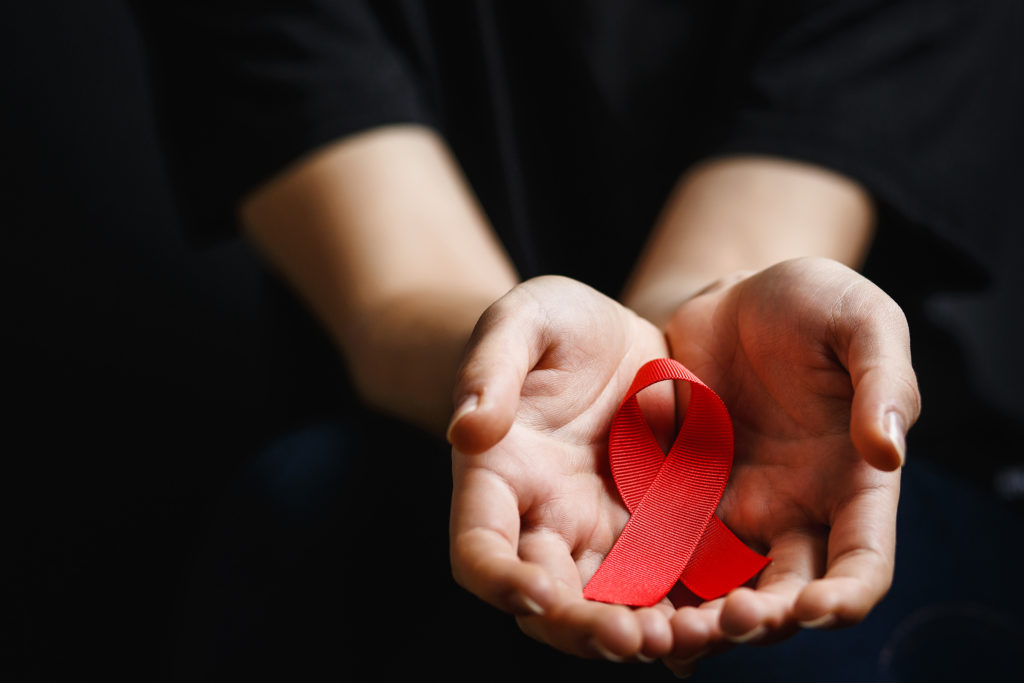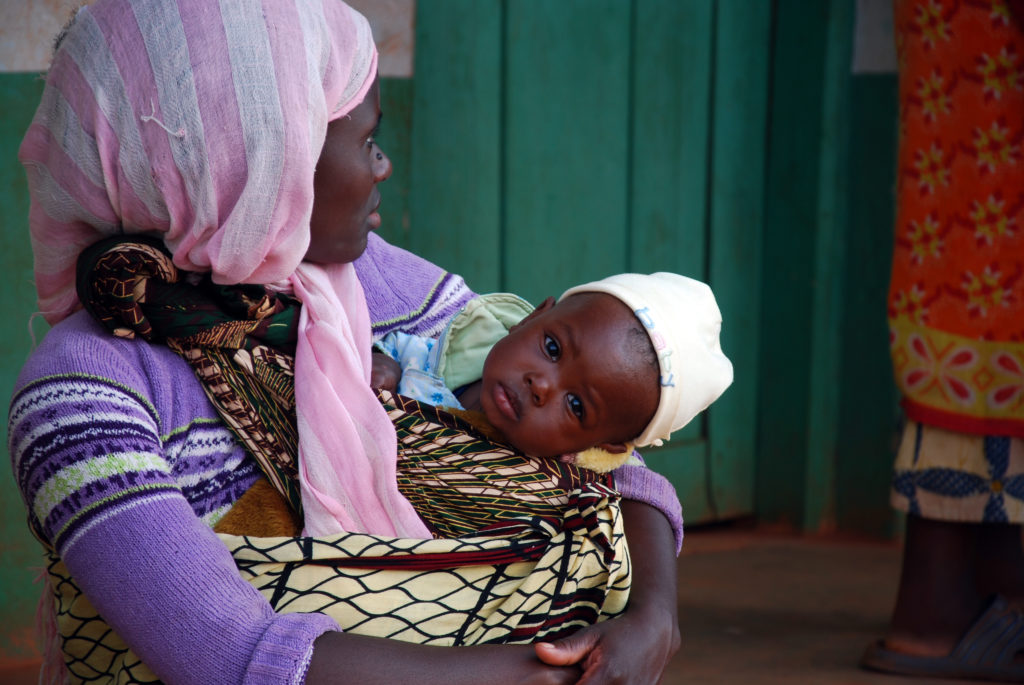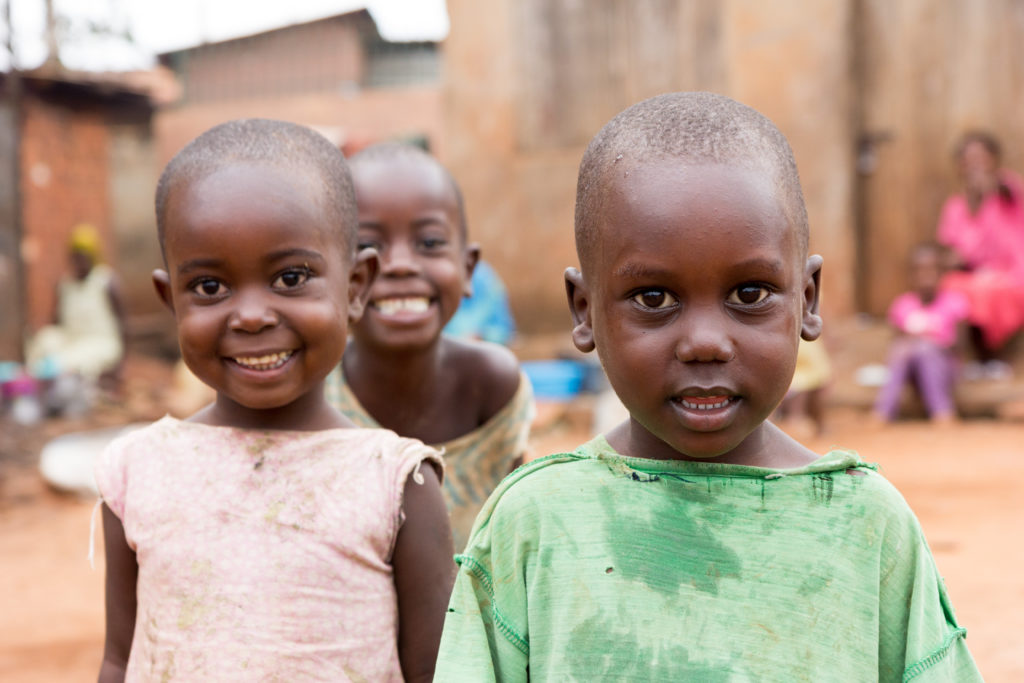The human immunodeficiency virus (HIV) and its most severe stage – acquired immunodeficiency syndrome (AIDS) – affect 39 million people globally (UNICEF, 2023). Of this affected group, 2.58 million are children under the age of 19 (UNICEF, 2019). However, aside from medical challenges and parental absences, HIV can also be a catalyst for an array of problems for children due to widespread cultural stigmas surrounding the infection. These include poverty, loss of opportunities and discrimination.

Defining HIV/AIDS
HIV is a virus that attacks its host’s immune system. The virus is thought to have originated from a specific sub-species of chimpanzees in Central Africa. While HIV has no cure, it can be controlled and managed – enabling long, healthy lives – if adequate medical care is provided (Centers for Disease Control and Prevention, 2022).
If however, HIV is not adequately treated, it can lead to AIDS, which is the third and most severe stage of HIV. People suffering from AIDS have severely compromised immune symptoms, which leave them susceptible to other illnesses: often termed opportunistic infections (Centers for Disease Control and Prevention, 2022).
Global improvements in medical care and accessibility of health services have significantly reduced the death rate among patients diagnosed with AIDS. There were an estimated 630,000 deaths in 2022, which equated to 51% of all AIDS patients in that year (UNAIDS, 2023). In 2004, nearly 70% of all AIDS sufferers died from the disease (UNAIDS, 2023).
Transmission, prevention, symptoms and management
HIV is transmitted through direct contact with, or the exchange of, bodily fluids (Together We Can, 2023). As a result, the only certain way to avoid contracting the virus is by avoiding the exchange of bodily fluids with someone suffering from the disease. Medications to reduce the risk of contracting the virus if you do come into contact with the bodily fluids of someone carrying the disease (known as pre-exposure prophylaxis) do exist but do not guarantee protection against infection (National Health Service UK, 2023).
Patients who have been diagnosed with AIDS can reduce the risk of opportunistic infections by taking a few preventative steps. These include medicines, vaccines, reduced exposure to sexually transmitted diseases or fluid-transmitted diseases, and a general increase in sanitation practices (Centers for Disease Control and Prevention, 2022).
Not all people who are HIV positive present symptoms, making it critically important that individuals get tested. Those that do, often demonstrate flu-like symptoms a few weeks after contracting the virus which can last multiple weeks (Centers for Disease Control and Prevention, 2022).
People suffering from AIDS, by contrast, can present an array of symptoms dependent on the infection they contract due to their weakened immune system. These can range from visible ailments – such as fungal infections and skin conditions – to forms of cancer (Centers for Disease Control and Prevention, 2022). The range of potential symptoms is broad and linked to the specific infections contracted.
Given HIV cannot be cured, it is crucial for people suffering from the virus to manage the progress of the infection – and monitor other potential infections. Usually, people with HIV are encouraged to take regular blood tests and antiretroviral medicines (antiretroviral treatment, ART) designed to stop the virus from replicating within the body (NHS, 2023). A combination of these medicines is often provided in different doses given the virus’ propensity to adapt rapidly and become immune to the medications (NHS, 2023).
Global prevalence of children living with HIV/AIDS
The global scale of HIV/AIDS, and the stigmas associated with the virus, make it especially difficult to estimate its scale and true prevalence. Existing child-specific research is overwhelmingly focused on a few regions where infection rates are known to be the highest.
Africa

Recent data from the United Nations Children’s Fund (UNICEF) points to an overwhelming number of children suffering from HIV in Africa. Research from 2019 suggested 90% of all children with HIV globally were from Sub-Saharan Africa (UNICEF, 2019). This is supported by post-pandemic data from 2020 which indicates that 89% of new paediatric infections, and 88% of confirmed infections among children and adolescents, can be attributed to the Sub-Saharan Africa region (UNICEF, 2021).
Despite progress in the treatment of pregnant women with HIV across the continent, children still struggle to gain access to adequate medical support. Between 2011 and 2018 the number of women receiving ART quadrupled, while the number of children receiving ART in the same timeframe roughly doubled (UNICEF, 2019).
Only half of all children aged 0-14 living with HIV across the continent receive any treatment at all (UNICEF, 2019). This number drops to 28% for children based in West and Central Africa (UNICEF, 2019). Around 80% of new adolescent infections in 2019 occurred among girls (UNICEF, 2019).
East Asia and the Pacific
In 2018, UNICEF estimated nearly 100,000 children were HIV Positive across East Asia and the Pacific (UNICEF, n.d). The region faces a particular challenge with HIV-positive children under 5, 68% of whom acquired the virus via transmission through pregnancy or delivery (UNICEF, n.d). Approximately, 75% of all AIDS-related deaths in children and adolescents throughout the region occur before the age of 5 (UNICEF, 2018).
Between 2010 and 2017 the number of new infections among children and adolescents remained consistent, with no significant progress in the reduction of the transmission, or of signs that contraction rates were increasing (UNICEF, 2018). ART is provided to an estimated 68% of children throughout the region; however, less than 30% of early-infant HIV infections are diagnosed (UNICEF, 2018).
Other affected regions
Outside of Africa, East Asia and the Pacific, only a few countries are known to host over a thousand children currently living with HIV. These include seven countries in Latin America, two countries in Central Asia and one country in Western Europe (UNICEF, 2018). These statistics reflect the scale of research into HIV in the relevant countries, rather than a concrete projection of active cases.
Latin America and the Caribbean host the highest HIV incidence rate among adolescents outside of Sub-Saharan Africa (UNICEF, 2018). The number of new infections among adolescents annually has remained consistent since 2010 (UNICEF, 2018). Over 60% of new HIV infections in 2017, among children in the region (aged 0-9) occurred during pregnancy (UNICEF, 2018). In the same year, boys accounted for 60% of all new adolescent infections; the number of boys with the infection decreased at half the rate of girls between 2010 and 2017.
Impact of living with HIV/AIDS
Beyond its health risks, HIV can catalyse a series of other direct and indirect challenges for children.
Familial disruption, homelessness and orphanhood
Nearly 14 million children under the age of 18 had lost one or both parents to AIDS-related causes at the end of 2022 (UNICEF, 2023). This statistic does not factor in non-biological parents and other family members responsible for caring for children. Over 13 million children (aged 0-17) have been orphaned due to AIDS, with 80% of these children living in Sub-Saharan Africa (Stoner et at, 2019). This number has been on a gradual decline from about 18 million in 2010, evidencing general global progress in combatting the virus (Our World in Data, 2023).
Multi-sectoral studies have showcased the vast array of challenges faced by orphaned children. Those who access care services often require individualised support which is rarely provided in institutions (Hope and Homes for Children, 2023). This can lead to patterns of neglect that put children at risk of emotional and physical abuse.(Hope and Homes for Children, 2023).
Country-specific case studies have also linked orphanhood with long-term health and educational consequences (Beegle et al, 2010). Without adequate and permanent support networks, children struggle to access essential services and progress through education. Recent research has further shone a light on the significant and disruptive psychological impacts of orphanhood on child development.
A 2023 study on the impacts of orphanhood in Ethiopia evidenced consistent anxiety – in addition to common depression and stress – across orphaned children in the Southwest of the country (Yosef et al, 2023). Broadly, HIV diagnoses in children or their carers significantly affect their psychological wellbeing, development and ability to access essential services as they grow.
Discrimination
Due to social stigmas and misinformation, children living with HIV are at risk of discrimination and broader forms of bullying (Conway, 2015). Many societies still suffer from widespread, archaic beliefs that HIV infections are tied to immoral practices and poor hygiene, or that the virus can be transmitted in ways other than through bodily fluids.
This provokes two categories of risk. Firstly, children suffering from the virus are often mistreated and bullied by their peers or shunned by their carers, leading to an increased risk of physical and psychological harm (Conway, 2015). Secondly, as a result of the point mentioned above, children are reluctant to share information about their positive diagnosis for fear of maltreatment and persecution (Conway, 2015). This inhibits them from accessing mental and physical health services which could be of support through their diagnosis.
Poverty
Poverty can be both a driver and a result of a positive HIV diagnosis. Impoverished communities with limited access to information are more likely to see the widespread practice of riskier behaviours regarding their health, including substance misuse and unprotected sex (American Psychological Association, 2022). This can affect children directly – if partaking in riskier practices – or indirectly by increasing the number of mothers likely to contract the virus.
Post-HIV diagnosis, children are more likely to fall into poverty due to the virus’ effects. Sufferers are more likely to be alienated from society, orphaned or have their educational and work opportunities limited (Conway, 2015). Additionally, ART treatment and other support services are generally expensive, putting a financial strain on sufferers and their families which can create and catalyse poverty cycles (Ijumba, 2011).
The impact on education
A series of case-study-specific research pieces from Sub-Saharan Africa have indicated that children who drop out of permanent education are more likely to contract HIV (Stoner et al, 2017). This is tied to the relationship between poverty and unsafe health practices that can increase the risk of HIV transmission (American Psychological Association, 2022). HIV diagnosis in children can also lead to school dropouts and poorer educational outcomes.
Landmark transnational studies from East and Southern Africa have showcased the myriad of ways in which governments fail to support children suffering from HIV once they leave education or attempt to return following disruption (Human Rights Watch, 2005).
Worldwide, children living with HIV face increasing risks of school absences or dropout due to sickness, orphanhood or parental illness if they are suffering from the virus (Zinyemba et al, 2019). For children who do complete their education, continued disruption to working availability and societal stigma can severely affect employment opportunities and reduce the likelihood of children suffering from HIV attaining financially prosperous lives.
HIV-response strategies for child well-being

Owing to the multitude of risks and harms faced by children suffering from HIV, or children with HIV-positive family members, governments and non-governmental organisations (NGO) are working to combat the virus in several ways. These responses are broadly broken down into a few categories (The Children’s Society, 2023):
- Physical health: Governments and organisations such as UNAIDS and UNICEF are working to increase testing for HIV among child populations, raising awareness of the physical health risks of substance use and unprotected sex, and seeking to broaden access to ART and other forms of treatment.
- Mental health: Governments and support organisations are increasing the mental health support services accessible for children suffering from HIV. This includes enhanced training for all individuals coming into direct contact with children suffering from HIV. Educators, medical practitioners, therapists, social workers and child-carers, among others, all need to be made aware of the child-specific risks of HIV. Children also require support to cope with bullying and associated maltreatment that is likely following an HIV diagnosis.
- Raising awareness: Children are in an inherently vulnerable position; it is, therefore, crucial that modern information on HIV prevalence, transmission, vulnerabilities and infection consequences are normalised to foster a protective culture and break down archaic stigmas. This can be done at scale or within confined communities. World Aids Day provides an example of the ways in which governments can, on a global scale, build awareness of the virus. Similarly, school and community campaigns led by local change-makers can help to normalise the virus and reaffirm the need for vigilance and care.
Written by Vanessa Cezarita Cordeiro
Internally proofread by Aditi Partha
Last updated on 5 November 2023
References:
American Psychological Association. (2022, April). “HIV/AIDS and socioeconomic status.” Retrieved from American Psychological Association, accessed on 5 November 2023.
Beegle, K., De Weerdt, J., & Dercon, S. (2010, February). “Orphanhood and human capital destruction: is there persistence into adulthood?” Volume 47, issue 1. Retrieved from PubMed Central, accessed on 5 November 2023.
Centers for Disease Control and Prevention. (2022, June 30). “About HIV.” Retrieved from Centers for Disease Control and Prevention, accessed on 31 October 2023.
Conway, M. (2015). “HIV in schools: A good practice guide to supporting children living with and affected by HIV.” Retrieved from National Children’s Bureau, accessed on 3 November 2023.
Hope and Homes for Children. (2023.) “Why it matters: How orphanages harm children.” Retrieved from Hope and Homes for Children, accessed on 5 November 2023.
Human Rights Watch. (2005, October 10). “Africa: Neglect of AIDS orphans fuels school drop-out.” Retrieved from Human Rights Watch, accessed on 1 November 2023.
Ijumba, N. (2011). “Impact of HIV/AIDS on education and poverty.” Retrieved from United Nations Chronicle, accessed on 2 November 2023.
NHS. (2021, April 22). “Prevention HIV and AIDS.” Retrieved from NHS, accessed on 2 November 2023.
NHS. (2021, April 22). “Treatment HIV and AIDS.” Retrieved from NHS, accessed on 2 November 2023.
Our World in Data. (2023). “Children orphaned due to AIDS deaths, 1990 to 2022.” Retrieved from Our World in Data, accessed on 5 November 2023.
Stoner, M., Pettifor, A., Edwards, J., Aiello, A., Halpern, C., Julien, A., Selin, A., Twine, R., Hughes, J., Wang, J., Agyei, Y., Gomez-Olive, X., Wagner, R., MacPhail, C., & Kahn, K. (2017, September 24). “The effect of school attendance and school dropout on incident HIV and HSV-2 among young women in rural South Africa enrolled in HPTN 068.” Retrieved from National Library of Medicine, National Center for Biotechnology Information, accessed on 5 November 2023.
Thapar, R., Singha, M., Kumar, N., Mithra, P., Unnikrishnan, B., Holla, R., Kulkarni, V., Darshan, B., & Kumar, A. (2019). “Clinico-epdimiological profile of children orphaned due to AIDS residing in care giving institutions in coastal south India.” Retrieved from PubMed Central, accessed on 5 November 2023.
The Children’s Society. (2023). “Families affected by HIV.” Retrieved from The Children’s Society, accessed on 6 November 2023.
Together We Can. (2020, October 31). “How HIV is transmitted.” Retrieved from Together We Can, accessed on 31 October 2023.
UNAIDS. (2023, August 31). “Global HIV & AIDS statistics – fact sheet.” Retrieved from UNAIDS, accessed on 31 October 2023.
UNICEF East Asia and Pacific. (2021, December 1). “A prolonged COVID-19 pandemic is deepening the inequalities that have long driven the HIV epidemic, UNICEF warns ahead of world AIDS day.” Retrieved from UNICEF East Asia and Pacific, accessed on 2 November 2023.
UNICEF East Asia and Pacific. (n,d). “HIV/AIDS for every child, end AIDS.” Retrieved from UNICEF East Asia and Pacific, accessed on 2 November 2023.
UNICEF. (2018, December). “Children, HIV and AIDS regional snapshot: Latin America and the Caribbean.” Retrieved from UNICEF, accessed on 2 November 2023.
UNICEF. (2019, November 26). “Children, HIV and AIDS.” Retrieved from UNICEF Data, accessed on 1 November 2023.
UNICEF. (2023, July). “Global and regional trends.” Retrieved from UNICEF Data, accessed on 1 November 2023.
World Health Organization. (2023). “Global health observatory.” Retrieved from World Health Organization, accessed on 31 October 2023.
Yosef, T., Assefa, T., & Zinabie, H. (2023, April 4). “Psychological impacts of orphanhood in Southwest Ethiopia.” Volume 9, issue 4. Retrieved from Science Direct, accessed on 5 November 2023.
Zinyemba, T., Pavlova, M., & Groot, W. (2019, November 22). “Effects of HIV/AIDS on children’s education attainment: A systemic literature review.” Retrieved from Journal of Economic Surveys, accessed on 1 November 2023.

